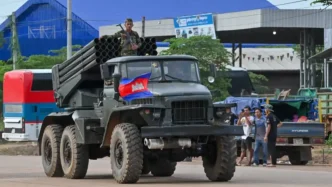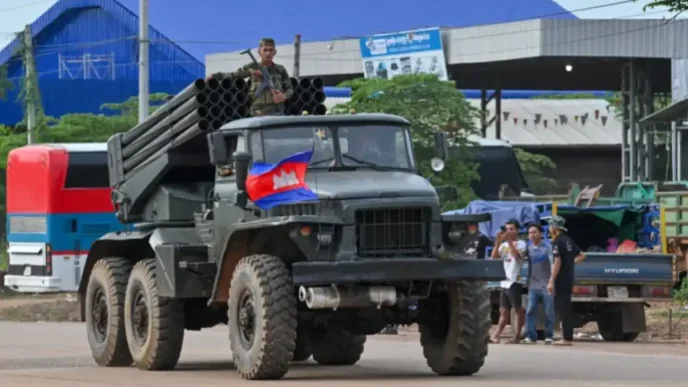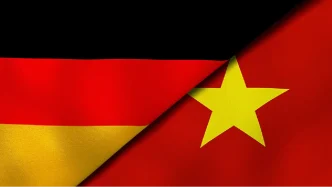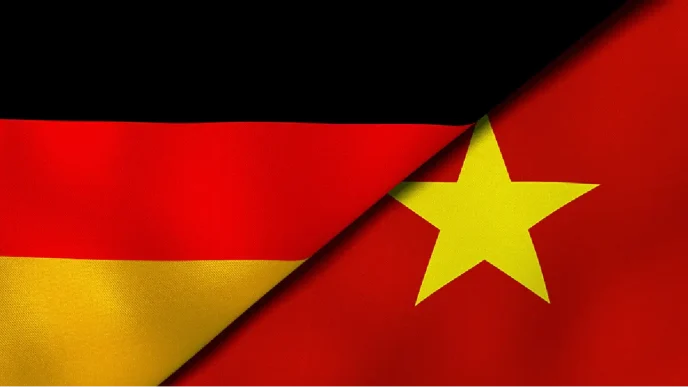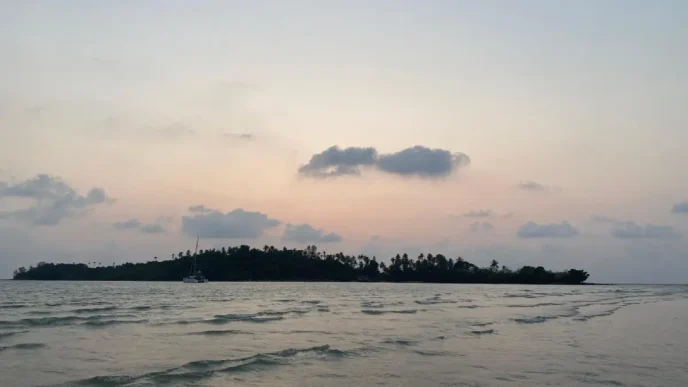In the heart of Southeast Asia, a simmering territorial dispute between Thailand and Cambodia continues to challenge bilateral relations, rooted in a colonial-era treaty that refuses to fade into history. The disagreement, centered on overlapping claims in the Gulf of Thailand and sacred border sites on the land border, is more than a contest over land or resources—it is a clash of national identities, historical grievances, and modern geopolitical pressures. With billions in potential energy reserves, strategic naval bases, and the shadow of global powers like China and the United States, the stakes are higher than ever for these two neighboring nations.
Origins of a Fractured Border
The roots of the Thai-Cambodian border dispute trace back to the early 20th century, when European colonial powers reshaped Southeast Asia’s political landscape. In 1907, the Siamese monarchy, under pressure to avoid full colonization, ceded the provinces of Battambang, Siem Reap, and Sisophon to French-controlled Cambodia through the Franco-Siamese Treaty. This agreement, while preserving Siam’s independence as the only uncolonized state in the region, sowed seeds of territorial ambiguity that persist to this day.
Battambang, Siem Reap, and Sisophon were once a part of Thailand
Before the imposition of Western-style borders, Siam (now known as Thailand) exerted influence over much of modern-day Cambodia, Laos, and parts of Malaysia through a system of tributary relationships rather than fixed boundaries. However, the arrival of British and French colonial forces demanded rigid cartographic divisions. The 1893 Franco-Siam Crisis, which saw Siam lose significant territory, and subsequent treaties forced the kingdom to adopt European notions of sovereignty. The 1907 treaty, signed under duress, remains a point of contention, with both nations interpreting its terms through lenses of national pride and historical loss.
Thai nationalism, particularly after the end of absolute monarchy in 1932, framed the country’s survival of colonization as a triumph of strategic diplomacy. Yet, this narrative also fostered a deep-seated wariness of foreign influence and an uncompromising stance on territorial integrity. For Cambodia, emerging from French colonial rule and decades of internal conflict, the border issue symbolizes a broader struggle for post-colonial justice and reclamation of lost heritage.
Maritime Claims and Energy Riches
The dispute escalated in 1972 when Cambodia unilaterally redrew its maritime boundary in the Gulf of Thailand, claiming an overlapping area of approximately 26,000 square kilometers. This zone, believed to hold vast untapped oil and gas reserves, represents significant economic potential for both nations. Thailand swiftly rejected Cambodia’s reinterpretation of the 1907 treaty, viewing it as a violation of international norms.
In an attempt to de-escalate tensions, the two countries signed a Memorandum of Understanding (MoU 44) in 2001, establishing a Joint Development Area for shared resource extraction without resolving the underlying sovereignty question. However, domestic political pressures and nationalist sentiments on both sides have repeatedly stalled implementation. As of recent years, the MoU remains largely theoretical, with little tangible progress toward cooperation.
The maritime dispute is not merely about economic gain—it carries strategic weight. Control over the Gulf of Thailand influences naval access and regional security dynamics. For Thailand, maintaining dominance in these waters is a matter of national security, while Cambodia sees assertion of its claims as a step toward equal footing with its more powerful neighbor.
Land Disputes and Cultural Flashpoints
Beyond the maritime zone, contested land areas along the border further complicate relations. Sites such as (Thai) Wat Ta Muan Thom, (Khmer) Prasat Ta Moan Thom, (Thai) Wat Ta Krabei, (Khmer) Prasat Ta Krabei, (Thai) Chong Bok, (Khmer) Mom Bei hold profound religious and cultural significance, fueling nationalist rhetoric in both countries hold profound religious and cultural significance, fueling nationalist rhetoric in both countries. These locations are often tied to ancient heritage, with temples and ruins that evoke deep emotional responses among Cambodians seeking to preserve their historical legacy. For Thais, the ceding of land and any perceived encroachment by Cambodia rekindles memories of territorial losses to colonial powers and their proxies.
Episodes of tension at these sites have, in the past, led to military skirmishes and diplomatic standoffs. The cultural weight of these areas makes compromise politically risky for leaders on both sides, as any concession is easily framed as a betrayal of national dignity. The border, in this sense, is not just a line on a map but a symbol of unresolved historical wounds.
China’s Growing Shadow
Adding a layer of complexity to the bilateral dispute is the involvement of external powers, particularly China. The expansion of Cambodia’s Ream Naval Base, supported by Chinese investment, has raised concerns in Bangkok. While officially described as a commercial port, Ream’s strategic location—near the disputed maritime zone and distant from major trade routes—has led to speculation about its potential military use.
Historically, Cambodia’s southern coast has played a geopolitical role. During the Vietnam War, ports in the region facilitated arms shipments, and under French colonial rule, they served as leverage points against neighboring states. Today, Ream’s development could provide Beijing with a foothold in the Gulf of Thailand, a prospect that unnerves Thai policymakers already wary of China’s expanding regional influence.
Thailand faces a delicate balancing act. With China accounting for a significant portion of its trade—approximately 25% of imports—economic ties are crucial. Yet, Bangkok remains aligned with the United States on security matters, participating in joint military exercises and maintaining long-standing defense partnerships. The U.S., however, has offered little beyond vague commitments to “regional stability,” leaving Thailand to navigate the Sino-American rivalry largely on its own. Ream’s emergence as a potential flashpoint risks drawing Thailand deeper into a geopolitical contest it would prefer to avoid.
Domestic Politics and the Perils of Diplomacy
Efforts to resolve the Thai-Cambodian border dispute have repeatedly faltered due to internal political dynamics. In Thailand, conservative factions and nationalist groups view any territorial compromise as an affront to national honor, tying the issue to the broader narrative of resisting foreign domination. Successive governments have thus been reluctant to pursue bold diplomatic initiatives, fearing domestic backlash.
In Cambodia, leaders face similar pressures. Conceding ground to Thailand, a historically dominant neighbor with greater military and economic clout, risks undermining political legitimacy. The border dispute is often framed within a narrative of reclaiming sovereignty after centuries of external interference, making compromise a hard sell to a public still grappling with the legacies of colonial rule and internal strife.
International mediation has been proposed as a potential path forward, but both nations remain cautious. Submitting the dispute to bodies like the International Court of Justice, as was done with the Preah Vihear Temple case in the mid-20th century, carries risks of unpredictable outcomes and further domestic unrest. Bilateral negotiations, while preferable, remain hampered by mutual distrust and the weight of history.
A Legacy That Refuses to Fade
The Thai-Cambodian border dispute encapsulates the enduring impact of colonial-era decisions on modern geopolitics. The 1907 treaty, drafted by foreign powers and accepted under coercion, continues to shape the relationship between two nations that share deep cultural and historical ties. Every clause and comma of that agreement remains a source of contention, a reminder of a past neither side can fully escape.
What is at stake extends beyond the immediate issues of energy reserves or strategic ports. The dispute touches on fundamental questions of sovereignty, national identity, and the right to define one’s borders in a post-colonial world. For Thailand, it is about safeguarding a legacy of independence hard-won through diplomatic maneuvering. For Cambodia, it represents a chance to assert autonomy and rectify historical injustices.
As both nations grapple with these challenges, the path forward remains uncertain. Diplomacy offers hope but demands political courage that has so far been in short supply. Escalation, whether through military posturing or nationalist rhetoric, risks destabilizing an already fragile region. And the growing influence of external powers, particularly China, adds a layer of complexity that neither Bangkok nor Phnom Penh can ignore.
Until Thailand and Cambodia confront the legacies of 1907 with honesty and mutual respect, their shared border will remain not just a geographical divide, but a persistent wound in their shared history. How they choose to address this wound—through dialogue, confrontation, or third-party intervention—will shape the future of their relationship and the broader stability of Southeast Asia.





